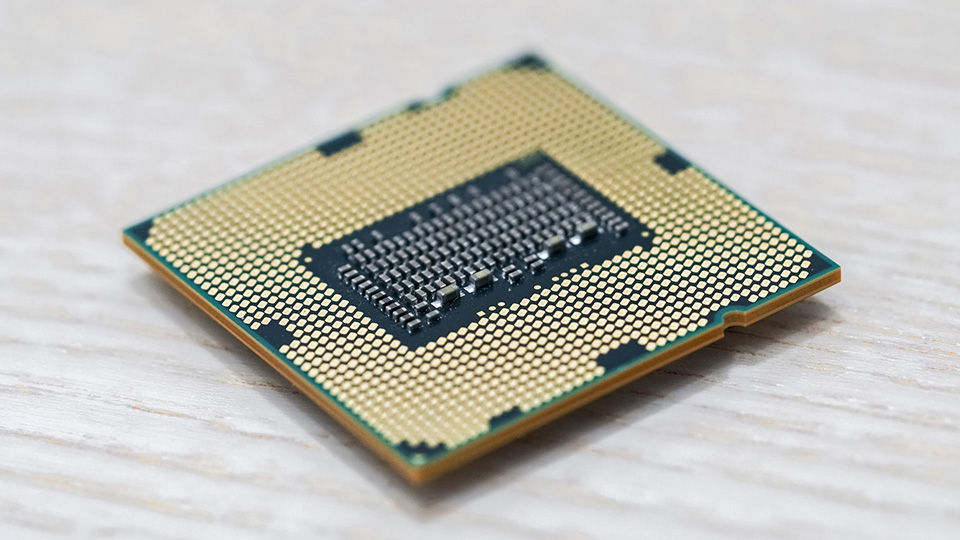Resale over time

Refurbishing as an answer to the chip shortage
August 12, 2021Resale over time

The focus on a systematic reuse of IT resources from an active lifecycle management process not only brings financial benefits! It also ensures a contribution to sustainability and environmental protection.
Systematic processes secure initial advantages
In many companies, dealing with "old hardware" is a necessary evil at the end of a replacement process for new IT resources. The focus is usually only on certified data erasure and some money via an IT broker. With the active integration of standard processes at the end of a life cycle, the company secures not inconsiderable advantages.
From a potential perspective, the process of reuse begins with the company's purchasing policy. A decisive factor is how much value an IT component still has "at the end of the life cycle". Here, a higher investment in the initial procurement is initially worthwhile in relation to a higher residual value. Another important circumstance is the value-securing handling of IT resources during operation. Adequate protected means of transport, general conditions in the use of the hardware and the adherence to maintenance cycles are only some means of maintaining the «value» at the end and achieving a maximum financial benefit.
The standard resale process, with essential steps, forms the conclusion of the first «lifecycle» and at the same time the start of a second lifetime in a different, possibly not so resource-intensive environment. The "state of the art" processes are listed below:
| Process step | Description |
|---|---|
| Planning | The reuse is assessed by specialists in a first step. Based on this assessment, all downstream process steps take place. |
| Dismantling, storage and transport | Clean dismantling, adequate packaging, storage and the safe transport to the site of further processing and preparation. |
| Inventory | Inventory of all used IT components with detailed information that makes further use assessable. |
| Data deletion | Certified data erasure to ensure data privacy and confidentiality. |
| Restoration | Ensuring the repair of IT means to the original condition with the original image of the basic configuration or, if necessary, hardware break fix tasks. |
| Refinement | Increasing value by refining the product, bundling it with other components, or upgrading individual components to meet current requirements. |
| Reuse | Internal additional use or sale to other companies. |
| Revenue recognition | Financial evaluation and implementation |
Digitization and automation of processes
As in many other industries, digitalization and automation are inevitably making inroads in the "reuse" sector, ensuring transparency, efficiency and compliance benefits. In the future, systems will be in use that give the owning company a holistic overview of asset tranches, volumes, classifications, valuations and the status of the processing process via an Internet portal. This transparency is not only convenient, it also ensures compliance with legal and statutory requirements at all times. Even in a historical view.
Topics such as the 3-fold deletion of data in conjunction with an automated very detailed quality analysis of the component ensures the possibility of concrete value determination and the possibility to plan the reuse even more precisely.
Climate protection strategy makes its way into the IT areas of companies
Environmental protection and sustainability are already relevant factors in all areas of a company today. Experts agree that these values will also greatly increase in importance in the IT processing of old hardware and significantly change corporate processes. The potential here is considerable with the use of IT resources. These, partly new or little used, are still simply disposed of to a large extent without thinking about sustainability and environmental protection. "The throwaway society" is clearly noticeable! Processing also takes place largely without the environmental focus. Newly, this aspect will find its way into the processes of companies and service providers. Basically, you can already take big steps in terms of environmental protection today with the establishment of the following topics in a climate strategy:
| Topic | Description | Aspect reuse |
|---|---|---|
| Usage time | Use material longer |
|
| Demand reduction | Restrict new material |
|
| CO2 neutrality | Emit less greenhouse gas |
|
| Energy | Energy consumption in the company | Actively reduce consumption |
| Material | Reduce material costs | Disposal strategy geared to environmental protection |
ISO as a way to improve quality
ISO certifications are a possibility for internal and external organizations in connection with the processing of IT material to standardize and improve processes. In essence, we are talking about the certifications ISO 9001 as a basic management system, which ensures that the quality ensuring process are mapped, and recurrently improve. ISO 14001 as an environmental management system, which ensures the continuous improvement of our own environmental performance and ISO 27001 with the focus on information and data security. The information management system reliably identifies and reduces threats within the company. Confidential data is protected from misuse, disclosure, and loss.
Social aspects of using legacy hardware
Social assessments when reusing legacy hardware can be applied in different ways. First, there is the option of making refurbished goods available to company employees at an affordable price through an internal sales web store. This is usually rated as attractive by employees and thus yields an indirect benefit in retaining employees in their companies.
Furthermore, companies that process and recycle old hardware offer people the opportunity to reintegrate into the labor market after a long period of unemployment, or enable the slightly handicapped to pursue meaningful and sustainable work and do something good for the environment. This factor, very important for the society, also leads to the fact that the added value of a reinstated hardware grows strongly. If not always economically - however, the social responsibility towards society is perceived.
Resume
Companies should deal intensively with these issues as part of «Corporate Social Responsibility», if this is not already part of their daily routine. Strategic reuse of old hardware and sustainable resale and recycling should be systematic and planned, and supported and driven by top management. The economic, environmental and social added values are significant and should be an integral part of any corporate strategy.
